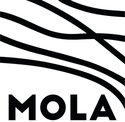Tottenham Court Road (Crossrail TCG09)
Museum of London Archaeology, 2019. https://doi.org/10.5284/1055117. How to cite using this DOI
Data copyright © Museum of London Archaeology, Crossrail Ltd unless otherwise stated
This work is licensed under a Creative Commons Attribution 4.0 International License.
Primary contact
Karen
Thomas
Head of Archive
Museum of London Archaeology
Resource identifiers
- ADS Collection: 2877
- DOI:https://doi.org/10.5284/1055117
- How to cite using this DOI
Introduction

The Tottenham Court Road archive includes data from both field evaluation and building recording.
A group of non-Listed buildings located to the south of the Astoria Theatre were recorded in December 2009 prior to demolition. The earliest building was formally a 19th-century brick-built warehouse (constructed 1877-85 by R L Roumieu and A Aitchison, completed by R A Roumieu) belonging to the Crosse and Blackwell Company who produced pickles and sauces in a factory in Soho Square. This building, 12 Sutton Row, is known to have been linked by a walkway over the street to the Astoria to the north, itself formerly a warehouse and part of the food factory. Its appearance had been much altered; the original Gothic arched loops and windows were replaced and the whole façade onto Charing Cross Road re-rendered, although the proportions of the original façade remained as did a turret with a spire in the NE corner of the building. Crosse and Blackwell left the Soho area in the 1920s and the warehouse was converted to showrooms and offices in 1925. It formerly extended further to the SW. The other buildings included one fronting Charing Cross Road that was built as a dance school in 1905, with retail units on the ground floor. The third building was built on the site of the demolished portion of the Crosse and Blackwell warehouse complex. The buildings on the site formed an entire block, whilst the 2nd and 3rd buildings were linked together in a recent phase of refurbishment to form 12 Goslett Yard.
Eight evaluation trenches were excavated between July 2009 and February 2010. These revealed no sign of natural brickearth, the quarrying of which may have resulted in such widespread truncation. Trenches to the south revealed a water-lain deposit which may have been a pre-17th-century land surface, overlain by dumped layers containing material dated 1650-1700. Trenches in the SW and northern parts of the site revealed 17th-century structural remains consistent with the first development of Bow Road (now Goslett Yard) in the 1670s. The northern trench revealed 18th-19th-century additions, while a trench to the east had a large subsurface vaulted chamber of probable 18th-century date. However, it was filled - almost to the roof - with late 19th/early 20th-century pot and glass associated with Crosse and Blackwell's occupation of the site. A trench in the NW corner of the site revealed a timber warehouse floor overlain by a similar deposit of this material. A trench in the NE corner exposed an 19th/20th-century brick structure whose function and extent could not be determined within the confines of the trench.
Further information about this site can be found in: Crosse and Blackwell 1830–1921: a British food manufacturer in London's West End by Nigel Jeffries with Lyn Blackmore and David Sorapure





